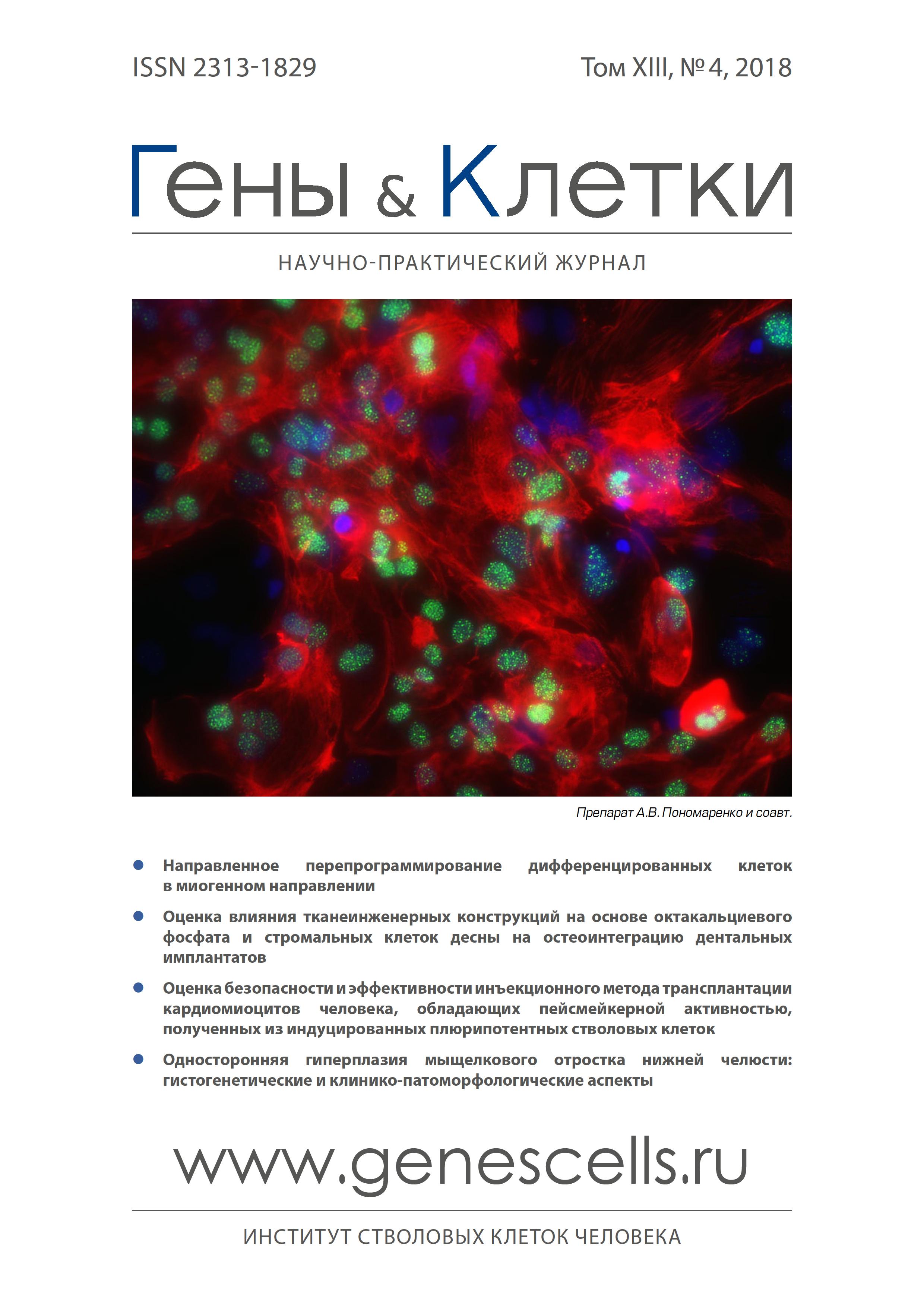Safety and effectiveness evaluation of the injection transplantation method of human pacemaker cardiomyocyte derived from induced pluripotent stem cells
- Authors: Ponomarenko A.V1, Chepeleva E.V1, Pavlova S.V1, Romanov A.B1, Strelnikov A.G1, Sergeevichev D.S1, Pokushalov E.A1
-
Affiliations:
- E.N. Meshalkin National Medical Research Center
- Issue: Vol 13, No 4 (2018)
- Pages: 31-36
- Section: Articles
- URL: https://genescells.ru/2313-1829/article/view/120723
- DOI: https://doi.org/10.23868/201812044
- ID: 120723
Cite item
Abstract
Full Text
About the authors
A. V Ponomarenko
E.N. Meshalkin National Medical Research Center
E. V Chepeleva
E.N. Meshalkin National Medical Research Center
S. V Pavlova
E.N. Meshalkin National Medical Research Center
A. B Romanov
E.N. Meshalkin National Medical Research Center
A. G Strelnikov
E.N. Meshalkin National Medical Research Center
D. S Sergeevichev
E.N. Meshalkin National Medical Research Center
Email: d_sergeevichev@meshalkin.ru
E. A Pokushalov
E.N. Meshalkin National Medical Research Center
References
- Boyett M.R., Honjo H., Kodama I. The sinoatrial node, a heterogeneous pacemaker structure. Cardiovasc. Res. 2000; 47(4): 658-87.
- Chugh S.S., Reinier K., Teodorescu C. et al. Epidemiology of sudden cardiac death: clinical and research implication. Prog. Cardiovasc. 2008; 51: 213-28.
- Adan V., Crown L.A. Diagnosis and treatment of sick sinus syndrome. Am. Fam. Physician. 2003; 67: 1725-32.
- Inoue S., Shinohara F., Sakai T. et al. Myocarditis and arrhythmia: a clinico-pathological study of conduction system based on serialsection in 65 cases. Jpn. Circ. J. 1989; 53: 49-57.
- Milano A., Vermeer A.M., Lodder E.M. et al. HCN4 mutations in multiple families with bradycardia and left ventricular noncompaction cardiomyopathy. J. Am. Coll. Cardiol. 2014; 64: 745-56.
- Balijepalli R.C., Kamp T.J. Caveolae, ion channels and cardiac arrhythmias. Prog. Biophys. Mol. Biol. 2008; 98: 149-60.
- Lei M., Zhang H., Grace A.A. SCN5A and sinoatrial node pacemaker function. Cardiovasc. Res. 2007; 74: 356-65.
- Poole J.E., Gleva M.J., Mela T. et al. Complication rates associated with pacemaker or implantable cardioverter-defibrillator generator replacements and upgrade procedures clinical perspective: results from the REPLACE Registry. Circulation 2010; 122(16): 1553-61.
- Takahashi K., Tanabe K., Ohnuki M. et al. Induction of pluripotent stem cells from adult human fibroblasts by defined factors. Cell 2007; 131(5): 861-72.
- Boheler K.R., Czyz J., Tweedie D. et al. Differentiation of pluripotent embryonic stem cells into cardiomyocytes. Circ. Res. 2002; 91(3): 189-201.
- Lian X., Zhang J., Azarin S.M. et al. Directed cardiomyocyte differentiation from human pluripotent stem cells by modulating Wnt/β-catenin signaling under fully defined conditions. Nat. Protoc. 2013; 8(1): 162-75.
- Zhang H., Lau D.H., Shlapakova I.N. et al. Implantation of sinoatrial node cells into canine right ventricle: biological pacing appears limited by the substrate. Cell Transplant. 2011; 20: 1907-14.
- Zhang L., Li X., Yu X. et al. Construction of vascularized pacemaker tissues by seeding cardiac progenitor cells and endothelial progenitor cells into Matrigel. Life Sciences 2017; 179: 139-46.
- Xia X., Li J., Xia B. et al. Matrigel scaffold combined with Ad-hBMP7-transfected chondrocytes improves the repair of rabbit cartilage defect. Exp. Ther. Med. 2017; 13(2): 542-50.
- Burridge P.W., Matsa E., Shukla P. et al. Chemically defined generation of human cardiomyocytes. Nature methods 2014; 11(8): 855-60.
- Худяков А.А., Курапеев Д.И., Костарева А.А. и др. Сравнение эффективности методов получения функционально активных кардиомиоцитов человека. Гены и Клетки 2013; 8(2): 47-55.
- Милевская Е.А., Немудрый А.А., Чепелева Е.В. и др. Оптимизация протокола интрамиокардиальной трансплантации с использованием люминесценции кардиальных мезенхимальных клеток, маркированных экспрессией люциферазы. Патология кровообращения и кардиохирургия 2015; 19(4-2): 69-77.
- Павлова С.В., Леонова Е.А., Чепелева Е.В. и др. Мониторинг трансплантации кардиальных клеток в зону ишемического повреждения миокарда с использованием люциферазной репортерной системы. Гены и Клетки 2017; 12(4): 69-75.
Supplementary files










